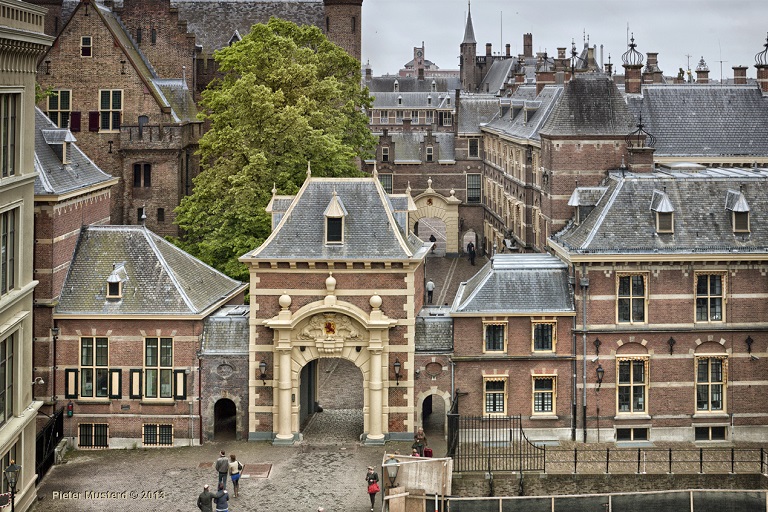Earlier than usual, elections are coming up again, and that has everything to do with the fall of the cabinet. On Nov. 22, the Netherlands may go to the polls again, due to an internal conflict within Rutte-IV. The coalition did not agree on the cabinet's commitment to asylum policy. As a result, the parties in the coalition felt they could no longer work together. The cabinet fell and a new formation period is now upon us. Therefore, in this article, we would like to look ahead with you to what lies ahead in the period up to the installation of the new House of Representatives.
But let's start with a brief summary of the past period. After the fall of the cabinet, all parties worked hard, at a faster pace than in a normal election,on their election programs. The draft election programs of most parties appeared in and around the month of September. In fact, should parties wish to have their programs officially calculated, they must have their package of measures delivered to CPB by September 29. So there is no hard deadline for submitting an election program, but this date is an important one to keep in mind for parties who want to show that the financial picture of their vision makes sense.
Most parties have a party congress after the presentation of the draft election program. At this congress, members can vote on amendments submitted in response to the draft election program, and on any changes to the candidate lists, which also become known in the weeks before the party congress. The parties then publish their final election programs. In some cases, relatively many changes were made, as in the case of the CDA, which made as many as 38 changes. In other cases, the programs remained virtually unchanged. Of course, parties are also free not to publish a draft program, or to hold a congress at all; after all, it all depends on how a party's organization is arranged. The PVV, for example, is a party without members, and therefore they will not have a congress where changes can be made.
Election recess
Since Thursday, Oct. 26, it has been election recess in the House of Representatives. This means that from then on there will be no more debates in the Lower House until after the elections. However, this does not mean that the parties can rest on their laurels. Indeed, during the recess there will have to be hard campaigning. That the parties are slowly getting into campaign mode could already be seen on the last day before the recess. Dozens of motions and amendments were voted on that day (and night). Several MPs also managed to raise their profiles strongly, as it is nice to be able to communicate to your supporters at the last minute what commitments you as a party have managed to wrest from the cabinet.
In addition, the recess that continues until the elections on Nov. 22 for the master parties will be devoted to seeking out the media. Many list leaders will be interviewed on national television, radio and newspapers. And although there will be no debates in the House of Representatives this period, our politicians are not sitting still. In addition to the election debates that are broadcast on television, and known to the general public, a variety of election debates are being organized by companies, industry associations and public institutions. These debates usually focus on a specific issue. For example, several agricultural debates are scheduled this period, as well as debates on water, climate and energy, seaports and animal welfare.
To the ballot box
After the election programs have been published and the campaign has been conducted, the Dutch will move toward the ballot box. If the results of the vote are final, which will take at least eight days, the new House of Representatives will be installed on December 6, 2023. However, this does not mean that there will be no debate until this period. In fact, the electoral recess runs until election day, which means that the "old House" still has time to debate from Nov. 22 to Dec. 5.
The Formation
What is also getting a lot of attention right now is the formation process that is coming up. Immediately after the elections, parties start talking to each other to see who can come up with a coalition agreement together. This begins with the appointment of an explorer by the Speaker of the House of Representatives. This scout is appointed based on the advice given by the newly elected group chairmen, and is tasked with investigating the various coalition possibilities. A discussion is held with each group chairman about how they envision the formation, after which the scout reports on which coalition is most likely to succeed. This step in the formation process is called the coalition formation called. Recently, there has been much discussion about the role of the explorer and who should hold it. A motion to give the King a role in this phase of the formation recently ran aground in the House of Representatives, but a motion to have the explorer be a person "detached from politics" did receive majority support.
The explorer will appoint an informateur(s) after his or her report. The informateur is commissioned by the House of Representatives to investigate a specific coalition. This person will then supervise the negotiations of the intended coalition parties, thus overseeing the second step in the formation process; the program formation. Should the parties fail to succeed in negotiations, the informateur will return to the House of Representatives with bad news, which means that the House will give a new assignment to this, or possibly a new, informateur. If the negotiations do succeed, there is a fresh coalition agreement on the table, after which they move on to the third step in the formation process; the portfolio division. Here the parties negotiate, still guided by the informateur, about who will provide a government minister for which portfolio. Should these negotiations also come to a successful conclusion, the final step in the formation process will be discussed: the staffing. The formateur, usually the intended prime minister, will formally ask proposed individuals whether they wish to join the cabinet.
The rules for the above process are not anchored in the Constitution, and so most of it is based on custom. Consequently, there is no deadline in the Netherlands for when a new government must be installed, and this means that the formation period can take a long time. If we look from 1946 onwards, formations take an average of 94 days. However, as the previous two formations have shown, there are always outliers. The formation of cabinets Rutte-III and Rutte-IV are both record holders for the longest formations, lasting 225 and 299 days, respectively.
Here is another list of all the important dates, in order:
September 29: Deadline for submission of draft election program (CPB's Passage)
October 9: Deadline to submit final candidate list
Oct. 26 - Nov. 22: Election recess
Nov. 22: Elections
Nov. 23/24: Start of formation process
December 6: Installation of the new House of Representatives
Not yet known: Installation of the new government


